The T550 (105°C) and T551 (125°C) axial leaded polymer hermetically sealed (PHS) devices are tantalum capacitors with a Ta anode and Ta2O5 dielectric. A conductive organic polymer replaces the traditionally used MnO2 or wet electrolyte as the cathode plate of the capacitor. The conductive organic polymer has very low ESR and improved capacitance retention at high frequency and low temperature. The PHS device also exhibits a benign failure mode, which eliminates the catastrophic spill of the acidic electrolyte during a case breach in Wet Tantalum capacitors. Additionally, this part may be operated at voltages up to 80% of rated voltage, with equivalent or better reliability than traditional MnO2 or Wet Tantalum capacitors operated at 50% of rated voltage.
KEMET is now introducing a new case size (C case) inside the T550 Series, offering higher capacitance availability for different voltages rails in a continuous effort to extend the technology offering to the defense and aerospace community. Starting with a new capacitance of 300µF rated at 50V, KEMET offers an exciting solution for power rails up to 40V in an operating temperature below 85°C.
PHS capacitors are available in two versions, axial through-hole (a) and SMD version (b):
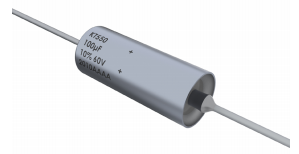
a – Axial Through-hole (B and C case size)
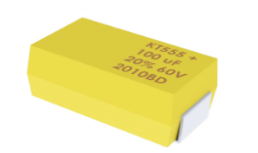
b – SMD version
The T550 (105°C) series is qualified according to the DLA drawing 13030. The design includes the state-of-the-art F-Tech anode production technology, which eliminates hidden defects in the dielectric that potentially can be responsible for long-term degradation of the quality of the dielectric layer. Also, the PHS series are 100% simulated breakdown screened.
F-Tech - the anode design and production technology are based on several techniques. For example, the utilization of organic lubricants can be washed off the anodes at low temperatures. This design provides a carbon level in sintered anodes equal to that in the original powder. Carbon is tested in every production lot after the de-lubrication, and the process is repeated if the carbon level is elevated compared to that in the original powder. A unique passivation process results in a very thin native oxide on the anode surface when anodes are exposed to air after the powder sintering and F-Tech. This process also provides a strong attachment of the Ta lead wire to the sintered powder by replacing the traditional embedded lead wire with argon welded one having large and strong welded nagged at the anode egress.
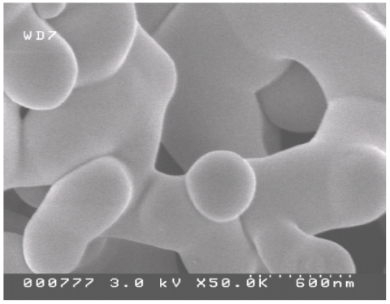
Figure 1 - Ta2O5 dielectric film formed on Ta anode manufactured with F-Tech.
Simulated Breakdown Screening (SBDS) - KEMET’s patented SBDS is a nondestructive testing technique that simulates the breakdown voltage (BDV) of a capacitor without damage to its dielectric or the general population of capacitors. This screening identifies hidden defects in the dielectric, providing the highest level of dielectric testing. SBDS is based on the simulation of breakdown voltage (BDV), the ultimate test of the dielectric in a capacitor.
Low BDV indicates defects in the dielectric and, therefore, a higher probability of failure in the field. High BDV indicates a stronger dielectric and high-reliability performance in the field. This new screening method allows KEMET to identify the breakdown voltage of each capacitor and provide only the strongest capacitors from each lot.
The benefit of SBDS is illustrated by a minimum breakdown voltage greater than 2X rated voltage compared to Weibull Graded parts with breakdown voltages as low as 1.25X rated voltage. Also, this is done without inducing wear out sometimes associated with Weibull Grading.
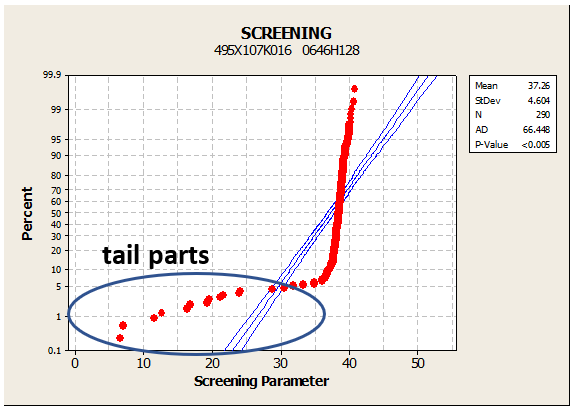
Figure 2 - Breakdown voltage simulation (SBDS), identifies the most reliable parts in any given batch.
The PHS Series is the best alternative solution when defense and aerospace customers need to replace the aged wet tantalum technology, either because of the solution's high cost due to the need for overdesign or because the working conditions require additional performance from the capacitance point of view. PHS capacitors are produced with solid cathode technology, meaning that the second plate of the capacitor, immediately after the dielectric layer is produced with a solid polymeric material in opposition to the old technology used to produce Wet Tantalum capacitors. Because of this construction evolution, the behavior of polymer capacitors in terms of temperature stability of capacitance and ESR, complemented with the possible variation of working frequency, makes this technology the best solution for defense, aerospace, and mission-critical applications.
(Temperature, Frequency, and Reliability)
Today, there is a clear trade-off when designers still consider the usage of Wet Tantalum capacitors that were so widely used in power supply lines. In the past, Wet technology could offer a considerable increase in the performance of the existing capacitance solutions (increased capacitance and lower ESR).
However, it is known that larger capacitance values typically have a greater risk of failure (a larger dielectric surface area is more likely to present structural defects). It is also often seen as increased sensitivity to mechanical stresses (shock and vibration) and reverse voltage conditions. Failures are often related to the internal gas pressure generated due to the electrolysis of the electrolyte caused by excessive leakage currents in forward or reverse directions.
There are additional reasons why Wet technology is being replaced by tantalum capacitors based on solid cathode technology, particularly the tantalum polymer capacitors. One of the major impacts of a temperature increase in a tantalum capacitor is the increase of leakage current. Although this will not necessarily result in a capacitor failure, it can cause circuit failure if DCL moves outside the required tolerance. As leakage current increases, it can speed up runaway effects leading to a dielectric breakdown. At low temperatures, the electrolyte used in devices will start freezing. As a result of that change, the capacitance will drop and, in a limited situation, result in an open circuit.
It is also known that applications continuously increase the level of switching frequency (mostly DC/DC converters). Again, that fact significantly impacts the capacitance roll-off for Wet Tantalums. In the next plots, experimental measurements of capacitance over frequency of two capacitors (PHS and Wet Tantalum), both 82µF 75V, at two different temperatures make clear the significant impact of temperature and frequency in Wet Tantalums when compared with the new solid cathode technology used in KEMET PHS T550 and T551 series.
At 100kHz, the PHS T550 capacitor sees the capacitance dropping from 49µF at 25°C to 43.4µF when submitted to -55°C. The Wet Tantalum shows a drop to 2.2µF at 100kHz and -55°C.
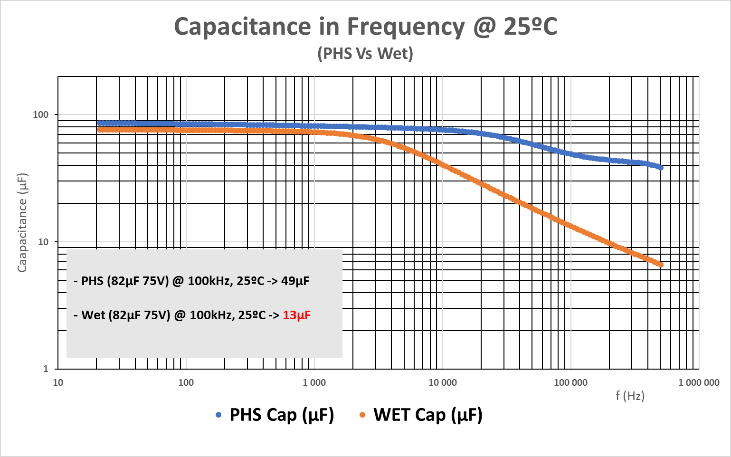
Fig. 3 – Experimental electrical readings of capacitance at 25°C and -55°C over frequency up to 500kHz.
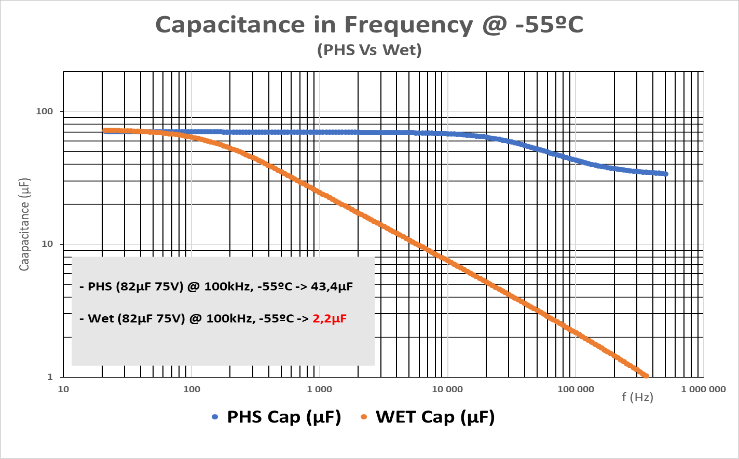
We quickly understand the limitations of the Wet technology when used in extreme environmental conditions and levels of frequencies compatible with most of the application requirements. The following two plots are evidence of the capacitance behavior with frequency limited at 500KHz. The capacitance stability offered by the solid cathode technology is evident in frequency and temperature.
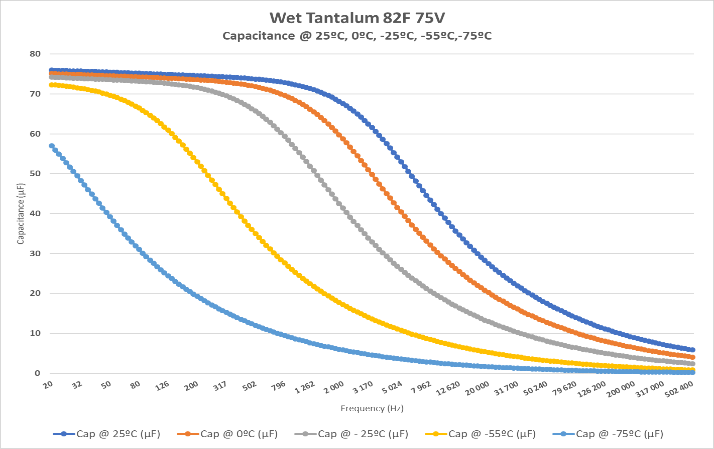
Figure 4 – Experimental electrical readings of capacitance PHS versus Wet Tantalum.
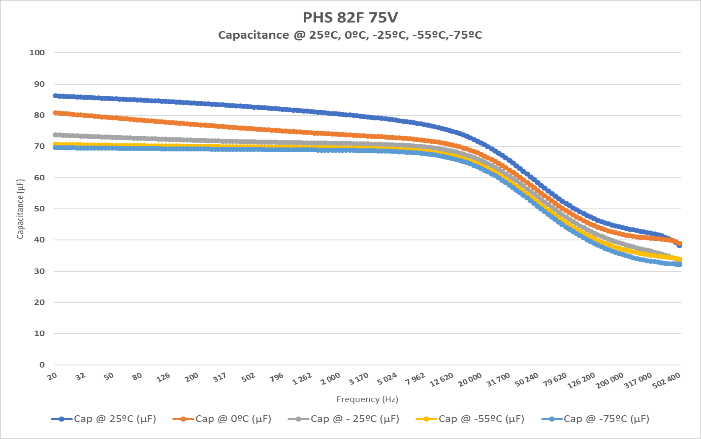
KEMET extends the product offering with a new case size inside the T550 series. With different reliability levels (B and C) and surge current options available, it is now possible to order a more volumetric efficient case size, with a 300µF, 50V available in a C case.

Figure 5 – Ordering information with new C case.
KEMET Tantalum Polymer Capacitors Hermetically Sealed (T550 Series) offer a voltage derating recommendation of 80% for applications up to 85°C. The new C case recently added to the PHS portfolio will offer 300µF to be used in a 40V rail. Also, the application will benefit from the advantages of a solid cathode capacitor where the roll-off with frequency and capacitance variation with temperature will offer additional stability and higher levels of energy.
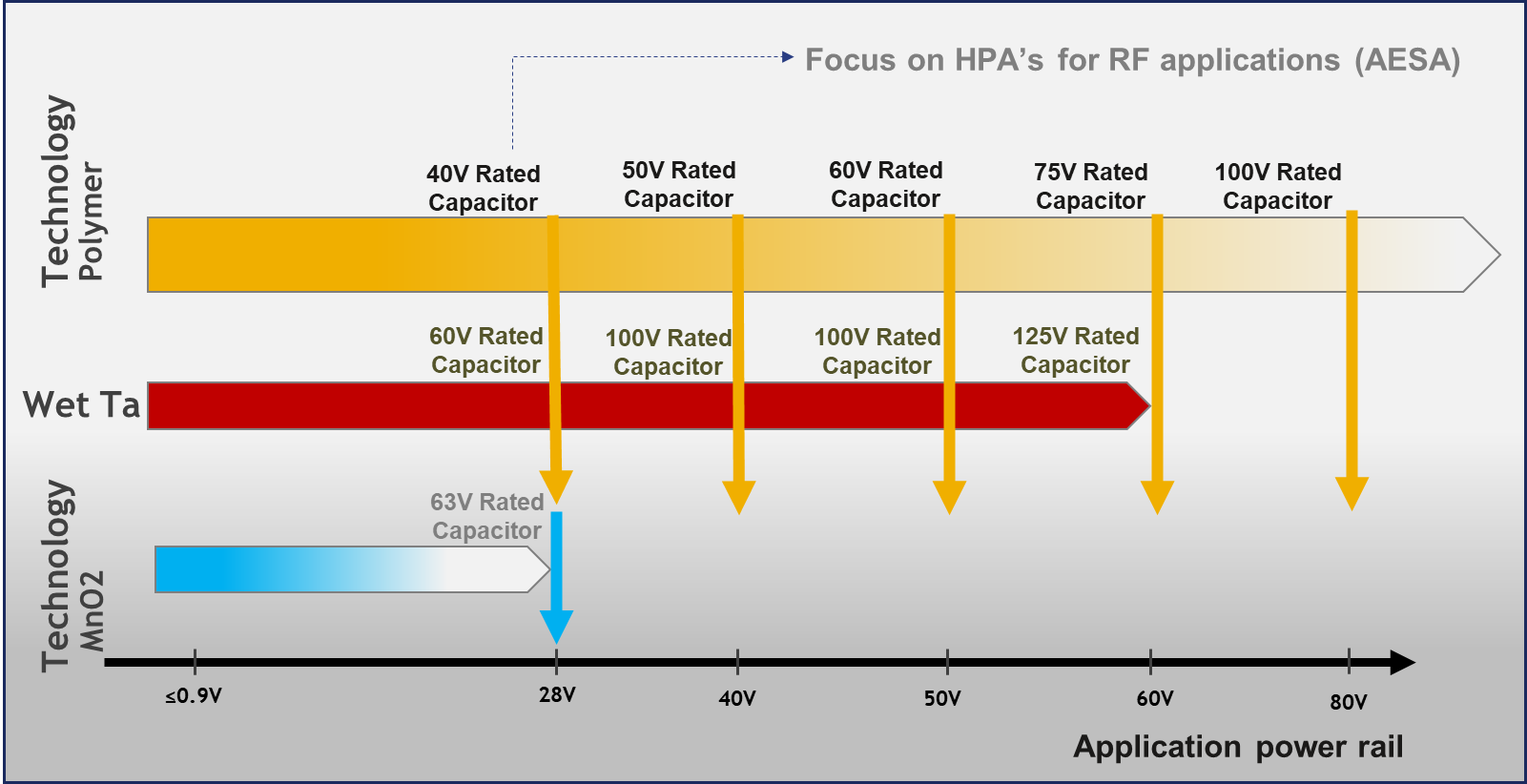
Figure 6 – Derating and Power Rails: Polymer versus Wet technology and MnO2.
Aware of the electrical performance of this capacitance solution, KEMET developed with the US Defense Logistics Agency (DLA) the drawing 13030, with Group A and B screening for mission-critical applications. The DLA drawing is aligned with the MIL-PRF-39006 requirements.
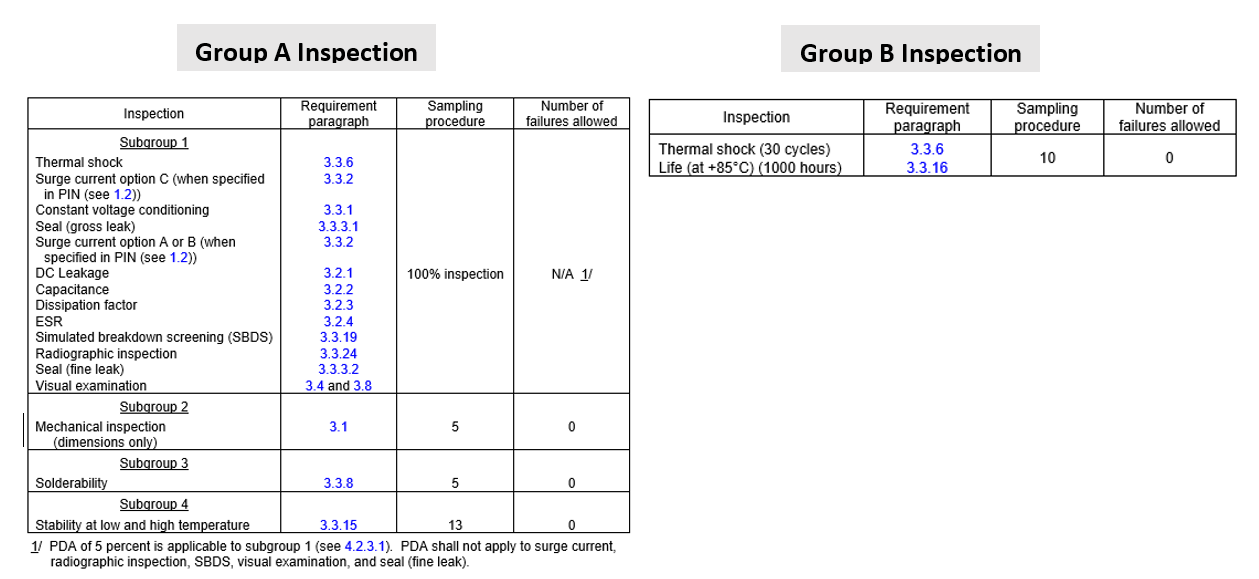
Figure 5 – DLA 13030, Group A and B testing.
To be DLA qualified, the T550 series is submitted to the following tests:
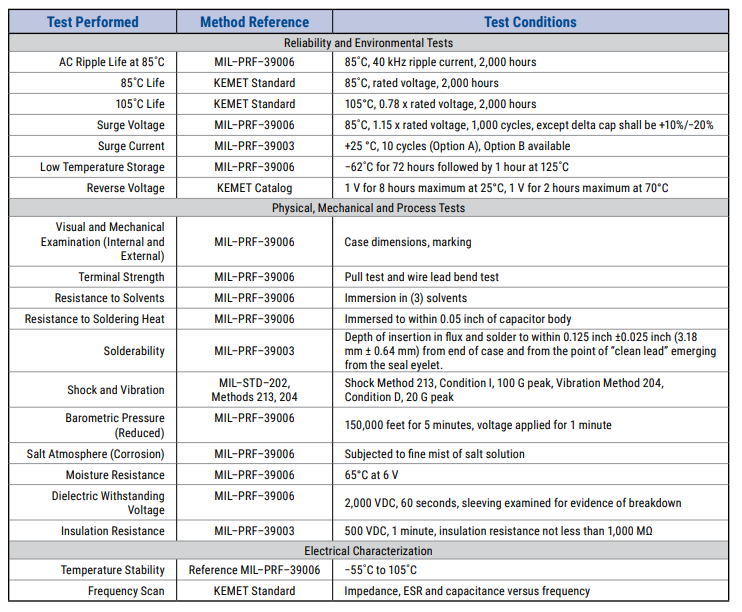
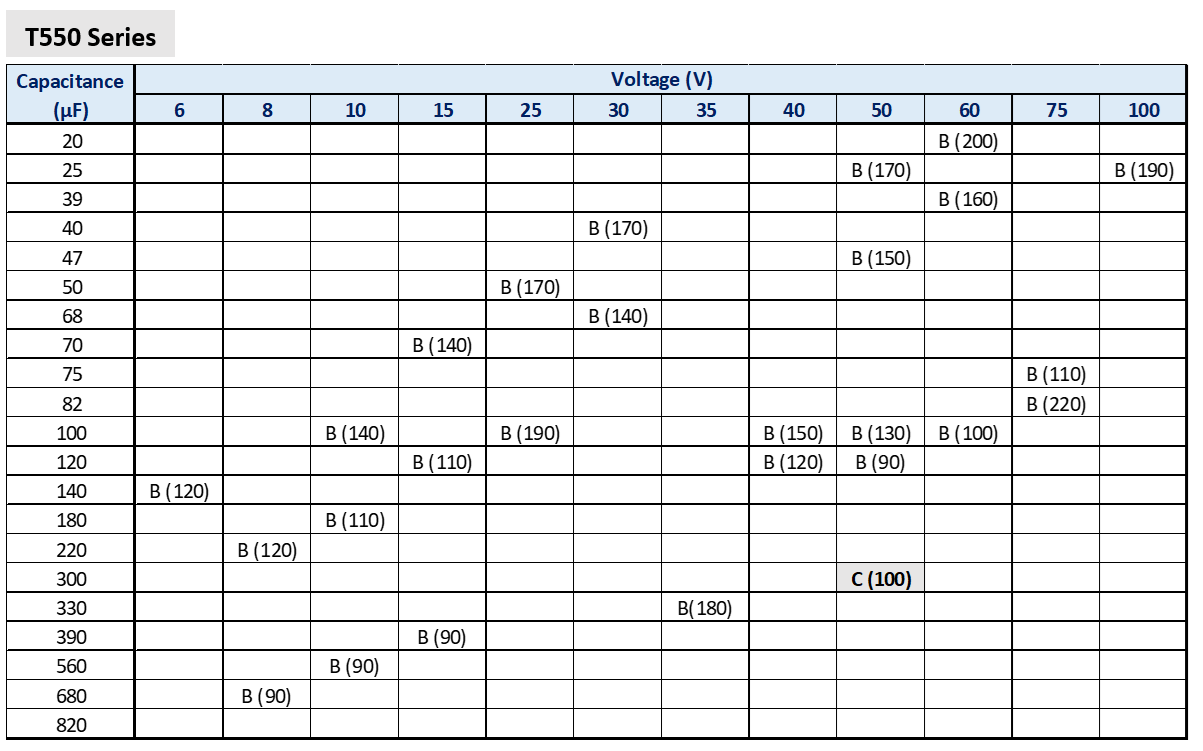
KEMET High-Reliability PHS series presents two different discrete configurations, through-hole, and SMD. Details of the mechanical construction are presented below:

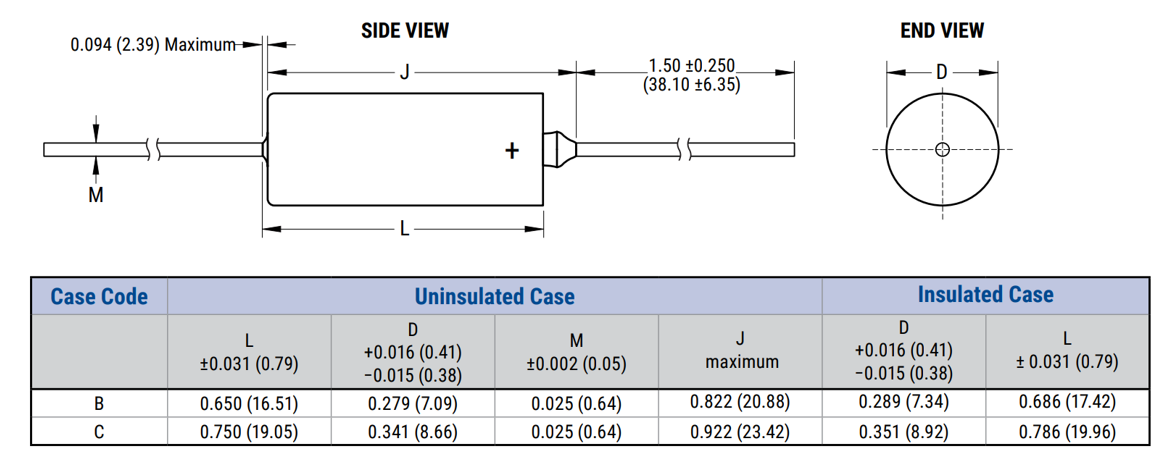
Bibliography
Teverovsky, A. Reliability Issues with New Technology Wet Tantalum Capacitors. Los Angeles, CA, USA. Military & Space Electronics Conference & Exhibition, 2013. <https://nepp.nasa.gov/files/24605/CMSE%202013%20%20WTC%20Teverovsky_n180.pdf>